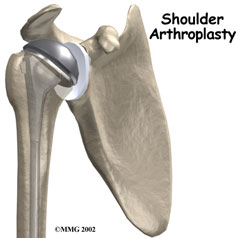Shoulder Replacement Surgery
Do You Have Shoulder Arthritis?
Shoulder arthritis occurs when the cartilage that provides a smooth gliding surface in the shoulder wears out or deteriorates. Arthritis in the shoulder is much less common than in the knee or the hip.
Shoulder Arthritis can be caused by:
- Osteoarthritis, which is wear and tear of the cartilage over time.
- Inflammatory disease, such as rheumatoid arthritis, causes pain and stiffness in the joint
- Shoulder trauma, like a fracture or dislocation.
- Rotator cuff arthropathy, a condition which occurs in some patients with large long-standing rotator cuff tears that cannot be repaired.
Shoulder Surgeon in the Seattle Area
Nonoperative treatment of shoulder arthritis can include activity modification, anti-inflammatory medications, and steroid injections. Surgical treatment is a joint replacement procedure performed by an orthopedic surgery specialist.
In a shoulder replacement, either the entire shoulder is replaced (total shoulder replacement), or just the ball of the shoulder is replaced (hemiarthroplasty). A new type of shoulder replacement known as a reverse total shoulder replacement is primarily designed for patients who have arthritis due to long-standing rotator cuff tears. Patients with rotator cuff arthropathy do not have normal shoulder motion and, therefore, often do not do well with a traditional shoulder replacement. The reverse shoulder replacement is very effective in relieving pain and restoring function in patients with rotator cuff arthropathy. The choice of shoulder replacement is individualized based on the patient.
Recovery after a shoulder replacement typically involves one night in the hospital. A sling is usually used for the first 4 weeks after shoulder replacement to allow the muscles to heal from surgery. Gentle range of motion is started the day after surgery and physical therapy is usually continued for about 2 months after surgery.



